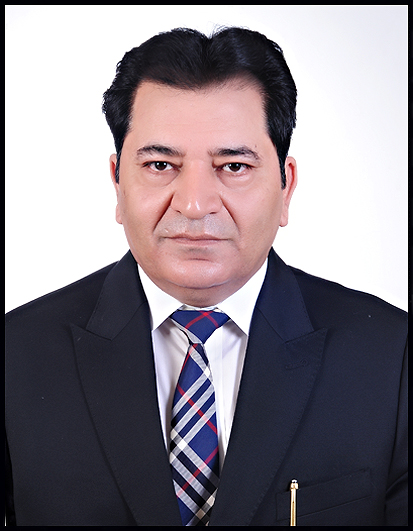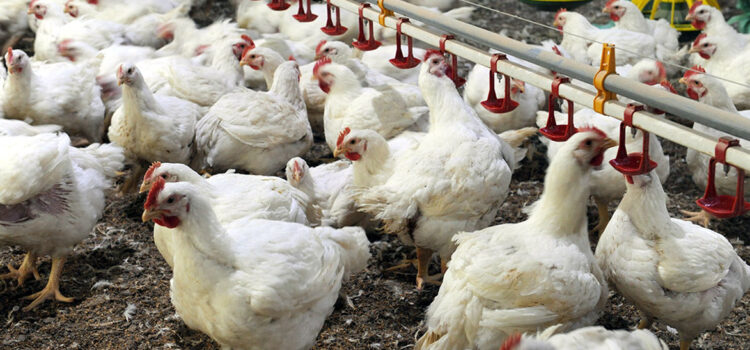Sustained consumer demand continues to drive the poultry meat sector, while there is a need to step up investment in infrastructure in the value chain as well as ensuring reliable feed supplies.

Treasurer,
Poultry Federation of India
Livestock sector plays a critical role as a subsector of agriculture in the Indian economy. The sector has huge potential in terms of its contribution in total economy, employment generation and world trade. The sector comprising poultry meat, eggs, dairy and fisheries witnessed a compound annual growth rate (CAGR) of 8.15% . As per the estimates of National Accounts Statistics, 2020 for sector wise Gross Value Added (GVA) of agriculture and allied sectors, the contribution of livestock in total agriculture and allied sector GVA (at constant prices) has increased from 24.32% (2014-15) to 29.35% (2019-20). Livestock sector contributed 4.35% of total GVA in 2019-20. Development of the livestock sector has led to improvement in per capita availability of milk, eggs and meat.
According to FAOSTAT production data for 2020-2021, India ranks 3rd in egg production and 6th in broiler production in the world. Egg production in the country has increased from 78.48 billion in 2014-15 to 122.11 billion 2020-21. The per capita availability of eggs is at 91 eggs per annum in 2020-21. Meat production in the country has increased from 6.69 million tons in 2014-15 to 8.80 million tons in 2020-21. The average per capita consumption of meat in the country is around 5.7 kg per annum.
As per the Department of Animal Husbandry and Dairying, more than 85% of India’s poultry meat is produced by organised commercial farms and the rest is produced by backyard poultry, mostly in the rural areas. Out of commercial broiler production, major poultry companies who follow vertically integrated operations have a share of around 60-65%. The poultry sector at present provides employment opportunities to around 6 million small and medium farmers (who own farms with 5,000-10,000 broiler size).
Driving demand of Poultry Meat
In the last three decades, the India poultry market has undergone significant transformation, and the region has emerged as one of the major sectors of the economy. The poultry market in the country is being largely driven by the rising disposable incomes and changing consumer food habits. In the post Covid19 pandemic phase also the demand for the protein rich food like poultry meat and eggs have increased sharply. The growing awareness regarding health and wellness is further driving the demand for a protein-rich diet.
According to industry estimates, the Indian poultry industry in 2022 was valued at around $28 billion. Aided by the increasing popularity of online services and growing online food delivery channels, the market is expected to witness a further growth in the next 5 to 10 years with a growth in CAGR of 8.1%.
As per Agricultural and Processed Food Products Development Authority (APEDA) data, in 2021-22, India exported 3,20,240 tons of poultry products valued at Rs 529 crore ($ 71 million). Traditional export destinations have been Oman, Maldives, Indonesia, Vietnam and Russia. Malaysia for the first commenced importing eggs from Namakkal (Tamil Nadu) recently. Though both the quantity and value of the exported processed poultry products have increased during the last few years and further efforts are being made to increase poultry exports from India, the trade is very small in comparison to the global trade.
To support the livestock sector, the government has initiated several measures. The Animal Husbandry Infrastructure Development Fund (AHIDF) of Rs 15000 crore is being implemented from June 2020. The key objectives of the scheme is to fulfill the objective of protein enriched quality food requirement of the growing population of the country and prevent malnutrition. As far as poultry development is concerned the fund has provisions for technologically assisted layer farms with environmentally controlled systems, broiler breeder farms with environmentally controlled systems and hatcheries with environmentally controlled facilities. The support is also provided for Meat processing and value addition infrastructure and establishment of animal feed plants including poultry feed.
Under AHIDF, farmer producer organizations (FPOs), Micro Small and Medium Enterprises, Section 8 Companies, Private Companies and individual entrepreneur availing credit facilities will get 90% loan for which 3% interest subvention is provided by the Central Government. The Central Government is also providing Credit Guarantee of 25% of total borrowings for those projects which are fulfilling the definition of MSME projects.
The National Livestock Mission has been revised and realigned with an outlay of Rs.2300 crore for the five years commencing from 2021-22. The mission aims at development of entrepreneurs in rural poultry. The central Government is currently providing 50% subsidy up to Rs 25 Lacs to establish parent farm, rural hatchery, brooder cum mother unit for production of hatching eggs with minimum 1000 parent layers and chicks and rearing of the said chick up to four weeks in the mother unit.
The Self Help Group, Farmers Producer Organizations organization’s (FPO)/Farmers Cooperatives organization’s (FCOs) /Joint Liability Groups (JLGs) and Section 8 companies can avail financial assistance under the mission. Department of Animal Husbandry and Dairying has developed an online portal for a completely digitized Process with all the important documents to be uploaded on the portal nlm.udyamimitra.in.
Key future challenges
Rising consumption of poultry meat, supply of feed in the coming years has to be sustained to avoid volatility in the feed prices. Poultry feed comprises mainly maize and soya meal and the country needs to increase supplies of feed in the coming years. Another key challenge is that soybean productivity has largely stagnated in the last few years. In August 2021, as an exception due to domestic supply constraint, the government had allowed import of 1.2 million tons of genetically modified (GM) soybean meal to help the poultry industry tide over higher feed prices.
The government must take steps to increase feed supplies and allow cultivation of GM hybrid soybean so that future feed supplies could be assured. For the future demand of poultry meat, the government must liberalize imports of GM soybean meal and maize.
Trust on creating infrastructure of Poultry Processing
Processing and marketing of poultry range from live bird markets to highly sophisticated, fully automated, adhere to International Standards Organization (ISO) certified facilities and ready-to-eat convenience products. Lack or inadequacy of refrigeration is probably the biggest challenge poultry industry faces.
The poultry industry in the country is consistently growing due to the use of modern technology and there has been a gradual shift in demand from live bird to fresh chilled and frozen poultry product market. The government must step in supporting the sector in creating infrastructure for reducing losses in the poultry value chain. The better transportation infrastructure for live birds and more cold storage facilities for the processed meat will go a long way in modernizing the industry while sustaining the future growth prospects of poultry meat. Although the wet market continues to dominate the poultry industry, there has been a significant increase in e-commerce with the expansion of home delivery of various poultry meats and processed meat. Now there is an urgent need for setting up of modern poultry processing plants to cater to both domestic as well as export markets.
Previous article by author: Indian Poultry Exports – It’s Time To Be Competitive






